|
You have to wonder why they didn't rip the retractable ball turret design out of the B-24 and begin putting it in the B-17.
|
|
|
|

|
| # ? May 9, 2024 21:26 |
|
You also have to wonder why they didn't rip all that poo poo out except maybe the tail gun, send six guys to the infantry, carry more bombs and fly higher and faster, especially once long-range escort fighters became common.
|
|
|
|
I'm pretty sure they did that with the B-29, no idea on the B-17 though.
|
|
|
|
Sunday Punch posted:I'm pretty sure they did that with the B-29, no idea on the B-17 though. All turrets other than the tail gunner's were remotely controlled in the B-29.
|
|
|
|
Minto Took posted:All turrets other than the tail gunner's were remotely controlled in the B-29. I mean B-29s that were stripped of guns and gun crews, to carry more bombs and increase range. I think they were used for low-level night missions rather than to fly higher, the B-29 could already pretty much fly too high and fast for Japanese fighters to catch. 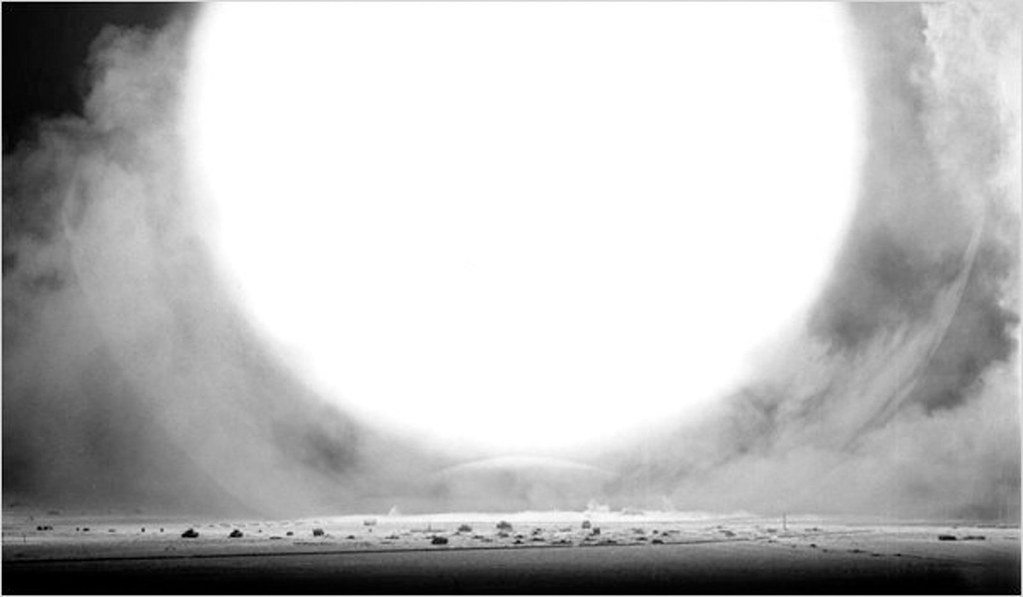 An atomic fireball in the ~20 kiloton range a few milliseconds after detonation. You can see the shockwave reflecting off the ground, it's pretty neat.
|
|
|
|
Sunday Punch posted:I mean B-29s that were stripped of guns and gun crews, to carry more bombs and increase range. I think they were used for low-level night missions rather than to fly higher, the B-29 could already pretty much fly too high and fast for Japanese fighters to catch. Beat me to this. They stripped them of everything but the tail guns/gunner, but yeah, it was basically to increase the bomb load for low level night incendiary area bombing. One of LeMay's ideas to increase the destruction they were raining on Japan.
|
|
|
|
Sunday Punch posted:I mean B-29s that were stripped of guns and gun crews, to carry more bombs and increase range. I think they were used for low-level night missions rather than to fly higher, the B-29 could already pretty much fly too high and fast for Japanese fighters to catch. If you set this up right, you limit the fireball contact with the ground and reduce the amount of fallout slightly. Also, the constructive interference of the two waves stacking on each other at the edge of that shockwave leads to more 'splodin of buildings and stuff.
|
|
|
|
NosmoKing posted:If you set this up right, you limit the fireball contact with the ground and reduce the amount of fallout slightly. Also, the constructive interference of the two waves stacking on each other at the edge of that shockwave leads to more 'splodin of buildings and stuff. You mean in addition to airbursts in general producing less fallout (less debris sucked into the cloud and irradiated)? If so that's pretty interesting, I didn't know that. Those little black things on the ground are tanks by the way, to give you a sense of scale on that fireball. 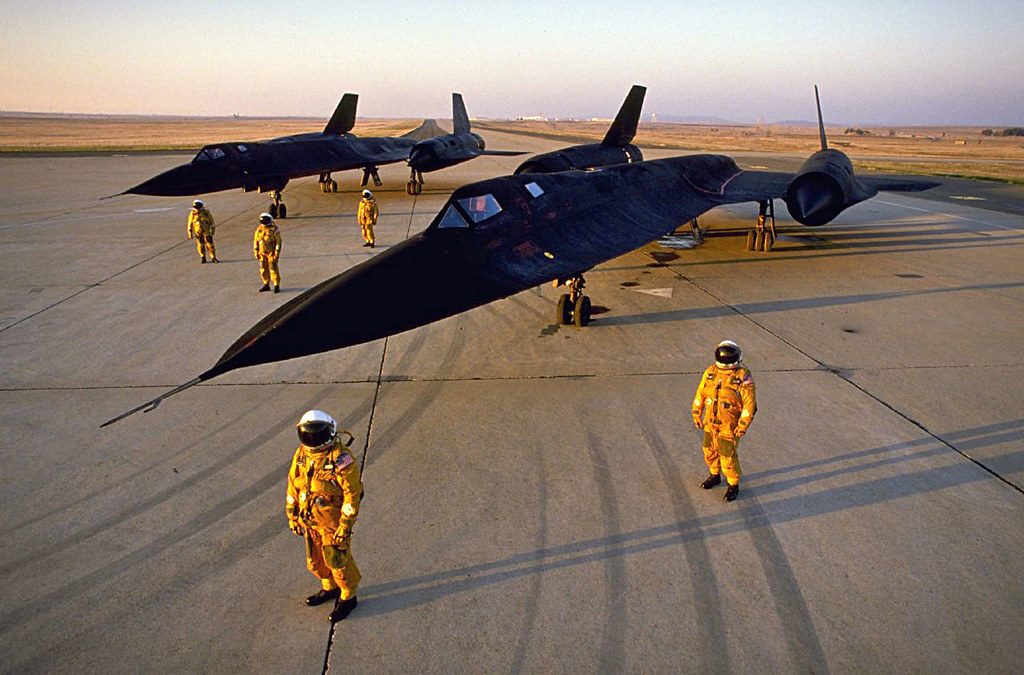 Nice suits.
|
|
|
|
Sunday Punch posted:Nice suits. You read some places that they use Mercury space suits and in others that they used Gemini space suits. Wikipedia has a different take on it. They say that the suits made by David Clark Company are more closely related to the suits worn in the space shuttle missions. Here: http://en.wikipedia.org/wiki/Sr-71#Life_support especially here: http://en.wikipedia.org/wiki/Launch_Entry_Suit and more here: http://en.wikipedia.org/wiki/David_Clark_Company
|
|
|
|
B4Ctom1 posted:You read some places that they use Mercury space suits and in others that they used Gemini space suits. Wikipedia has a different take on it. They say that the suits made by David Clark Company are more closely related to the suits worn in the space shuttle missions. There's always been a lot of technology transfer between various high altitude aerospace craft programmes, and pressure suits are no exception. I imagine designing a suit that can safely protect you through a high altitude, Mach 3 ejection is pretty tough, and that's a capability that wouldn't be required on the Shuttle suits.  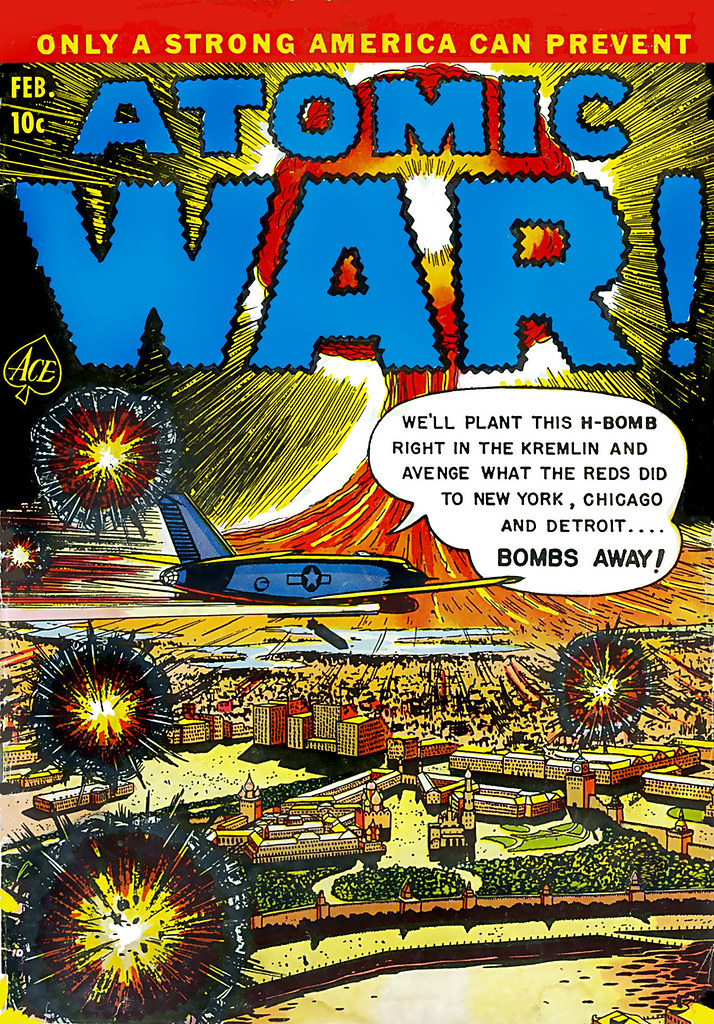 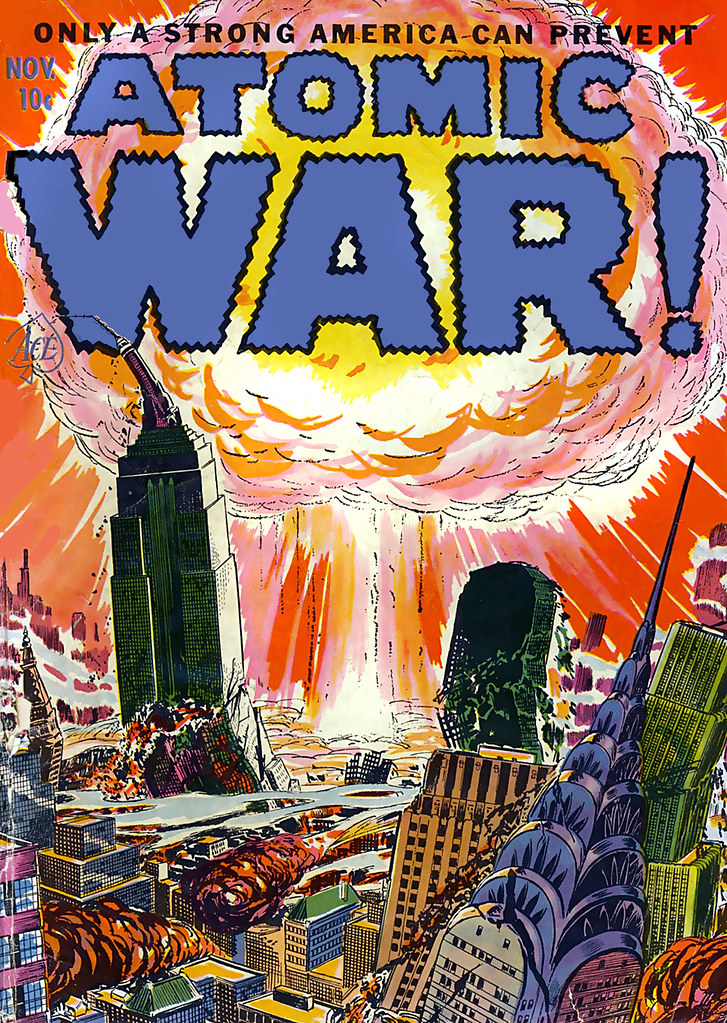
|
|
|
|
Sunday Punch posted:I mean B-29s that were stripped of guns and gun crews, to carry more bombs and increase range. I think they were used for low-level night missions rather than to fly higher, the B-29 could already pretty much fly too high and fast for Japanese fighters to catch. gently caress yes. 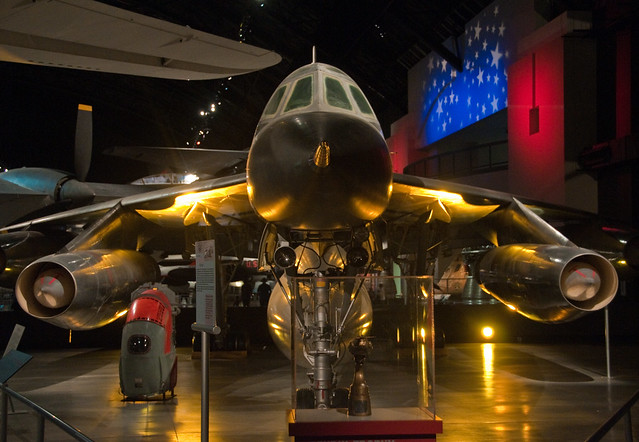 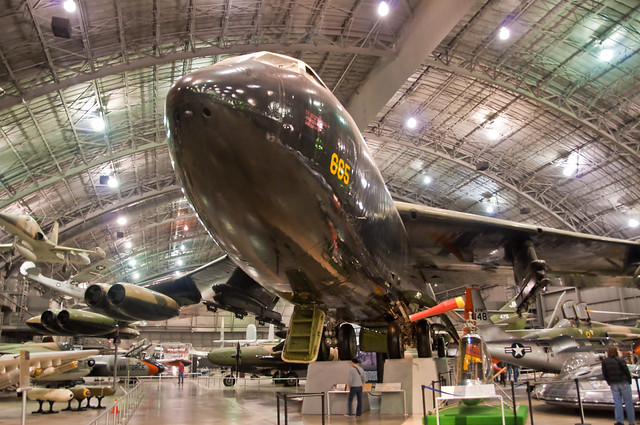 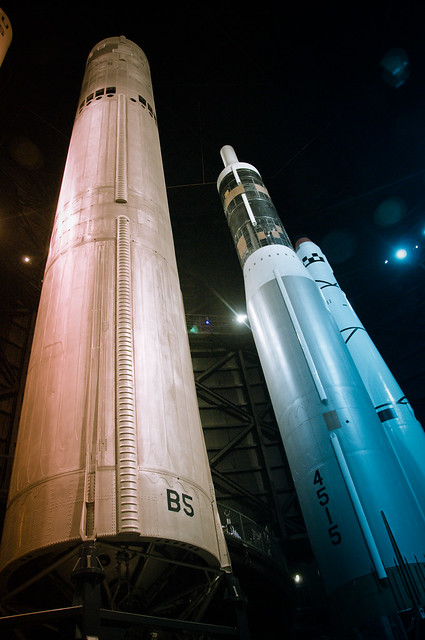 Here's the Cold War-est photo I've got. I work with one of the pilots who flew on this mission:  I'd read about his involvement before, and sent him this picture: "Hey, they've got the fuel line from your old Jolly Green in this museum." He sent back a bit of the story: quote:The whole story was sort of amusing (at least, now). We took some rounds through the side of the fuselage while in a 15-foot hover trying to land on the beach to make a pickup of Marines. One round went through the skin and the adjacent fuel pipe right where it branched off between the main line and the crossover line. We managed to limp the aircraft off of the beach and into forward flight, with the fuel pump still working, pumping fuel out the pipe and into the cabin. I used to have a picture which was taken from one of the other aircraft in the flight, from which you could see both the hole in the side of the fuselage and the fuel running out the aft ramp. Anyhow, we managed to get up to about 300 ft and 80 knots on the remaining engine, got the pump turned off and headed towards the aircraft carrier Coral Sea that was about 70 miles away. We told the ship we needed as much wind across the deck as they could manage and they had that floating island up over 25 knots when we touched down. We shut down and one of the CPOs came up and asked what we needed. The pilot got pulled off to brief the Admiral and I was left to see to repairs, along with my flight mechanic, a tech sergeant named Billy Willingham. I asked the CPO if they could make me a new fuel hose in their machine shop, and he said yeah, but not before his 24 F-4s were ready to land. He said "Wait here" and he disappeared down below. He showed up a few minutes later with a hack saw, a piece of rubber tubing, a roll of duct tape and some hose clamps. They hacksawed the split part out of the fuel line and the repairman ran his finger around the inside of the tube while telling Willingham to make sure he changed his fuel filters when he got back home. They then slipped the hose over the fuel line, secured it with two hose clamps on each end and covered the thing with the duct tape you see in the picture. We stood around for a while waiting for the pilot to come back and one of the deck hands walked up to me and asked "Where you been?" I told him "Koh Tang Island." He looked at the helicopter for a minute or so, with all of the holes and fuel dripping off the aft ramp and then asked "Where you going?" I told him "Koh Tang Island." He looked at me, looked at the bird again and said "Heavy, man" and walked away. About that time, the pilot was back and we cranked up and went back to the island. I guess we were just too stupid to know any better. Then they flew back out to Koh Tang and got 50 Marines off the beach.
|
|
|
|
That's awesome.
|
|
|
|
I've always loved that story. B-47 rocket assisted takeoff.
|
|
|
|
B4Ctom1 posted:You read some places that they use Mercury space suits and in others that they used Gemini space suits. Wikipedia has a different take on it. They say that the suits made by David Clark Company are more closely related to the suits worn in the space shuttle missions. They look similar to the Shuttle Ejection Escape Suit that was worn on the first four Space Shuttle Missions (They were two men missions when Columbia still had two SR-71 ejector seats) http://en.wikipedia.org/wiki/Shuttle_Ejection_Escape_Suit
|
|
|
|
Sunday Punch posted:I've always loved that story. I'M A I'M A SUCK MY DIIIIIIICK! I'M A What's the under the nose there, a bombardier cage?
|
|
|
Mr. Despair posted:That's awesome. What's not so awesome is that a few marines were left behind on the beach during the evacuation. They were captured and executed a few days later.
|
|
|
|
|
Ygolonac posted:I'M A Looks like a radome.
|
|
|
|
What museum is that Hustler in?
|
|
|
|
Alpine Mustache posted:What museum is that Hustler in? That's 59-2458 at Wright-Pat, note the Bendix Trophy sitting in front of it.
|
|
|
|
The Proc posted:That's 59-2458 at Wright-Pat, note the Bendix Trophy sitting in front of it. I've seen that B-58. I should make another weekend trip to Wright-Pat.
|
|
|
|
Two Atlas rockets with very different payloads. 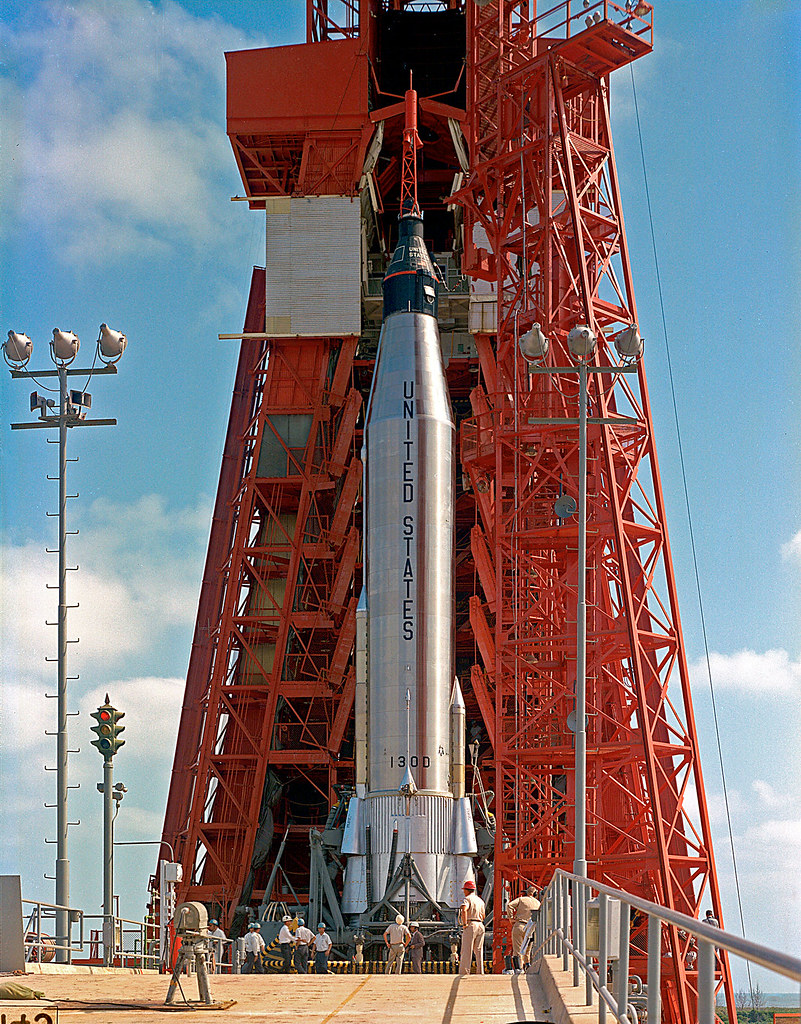 I wonder if that traffic light turns green before they can launch? The technology of the early space program was a pretty nice 'swords into plowshares' sort of arrangement. If we'd built Orion we could have directly been using nuclear weapons for peaceful purposes. Instead of dismantling all those nukes after the various arms limitation agreements we could have shot them off into space and sent a hundred thousand tons to Mars or something.
|
|
|
|
Sunday Punch posted:If we'd built Orion we could have directly been using nuclear weapons for peaceful purposes. Instead of dismantling all those nukes after the various arms limitation agreements we could have shot them off into space and sent a hundred thousand tons to Mars or something. The flip side to "if we had built Orion" is that the USAF would have had their own on permanent alert up there, loaded with nukes pointed back down at Earth. If we built Orion today, maybe that wouldn't happen. Though with that new "secret" unmanned shuttle-type thing they have, who knows what we have up there now.
|
|
|
|
VikingSkull posted:The flip side to "if we had built Orion" is that the USAF would have had their own on permanent alert up there, loaded with nukes pointed back down at Earth. If we built Orion today, maybe that wouldn't happen. Though with that new "secret" unmanned shuttle-type thing they have, who knows what we have up there now. With that sort of thrust capacity, you don't play with orbital nuclear weapons. True MAD is bolting an Orion thruster onto a likely member of the outer Kupier Belt, riding the gravitational slingshot of one or more outer planets for more velocity and windage adjustment, and well and truly loving this gay earth. Sure, it might take decades to get here, but what's a little patience when designing a last-strike system?
|
|
|
|
Yeah, that amount of thrust is drastic overkill for orbital warheads...hell, the Soviets had an operational FOBS deployed for a decade or two during the '60s into the '70s.
|
|
|
|
Cold War question: Did any communist satellite states supply combat troops to Afghanistan in the 80's? Especially Czech or Slovak?
|
|
|
|
Flanker posted:Cold War question: You find Vz.58's over there or something?
|
|
|
|
agadhahab posted:You find Vz.58's over there or something? Yes actually, they are in service with the ANP and ANA. I met a Czech guy today who had seen some poo poo but didn't want to talk about it. Not sure if he was there in the 80's or more recently, he was older but also very fit. Plausibly he served recently since CZ forces are a part of ISAF/Op Enduring Freedom. edited for spelling Flanker fucked around with this message at 19:12 on Jun 23, 2011 |
|
|
|
I remember reading something about the Czechs shipping a lot of vz.58s to the ANA/ANP but they weren't happy with them because they weren't AKs. I can't find the article now though, dammit. This wouldn't preclude there also being vzs there from the combloc days, of course!
|
|
|
|
Flanker posted:I met a Czech guy today who had seen some poo poo but didn't want to talk about it. There were no Czechslovakian soldiers (or any other Warsaw Pact nation) in the Soviet-Afghan war. The combat participation of Czech soldiers in the current Afghan war is pretty small. They have a presence in Logar province.
|
|
|
|
iyaayas01 posted:Yeah, that amount of thrust is drastic overkill for orbital warheads...hell, the Soviets had an operational FOBS deployed for a decade or two during the '60s into the '70s. I'm not even sure what sort of advantage an orbital nuclear weapons platform would give you. Space is very empty and very cold, meaning you can't hide anything up there. With ground based ICBMs capable of hitting anywhere on the planet as well as being 1. capable of hiding and 2. very well protected I don't really see any advantage to sticking your nukes up in space where everyone can see them and shoot them down. Orion always made more sense as a (very) heavy lift booster for deep space missions than a military craft that's going to hang around in Earth orbit. The military mission was only ever a desperate attempt to keep the program going when the money began to dry up. Although it kind of backfired when the Orion battleship was presented to Kennedy and he was so appalled at the idea he wanted the program shut down. I could do a big post about Orion like I did for NERVA and Dyna-Soar if you guys are interested, it's a pretty fascinating piece of history. Posting a completely unrelated picture because I don't have anything relevant and I like images in this thread:  USAF personnel and B-50 bomber, Alaska.
|
|
|
|
Sunday Punch posted:I could do a big post about Orion like I did for NERVA and Dyna-Soar if you guys are interested, it's a pretty fascinating piece of history.
|
|
|
|
Sunday Punch posted:I'm not even sure what sort of advantage an orbital nuclear weapons platform would give you. The US built all its radar poo poo in Canada and FOBS sends the warheads over Antarctica and Mexico.
|
|
|
|
atlas silo's http://maps.google.com/maps?q=41.08...86&z=17&iwloc=A and http://maps.google.com/maps?q=41.37...89&z=14&iwloc=A Peacekeeper Silo http://maps.google.com/maps?q=42.00...49&z=18&iwloc=A Minuteman 3 Silo http://maps.google.com/maps?q=41.30...49&z=18&iwloc=A Peacekeeper and Minuteman training silos side by side next to training building at FE Warren AFB. You can see the one on the right is "open hole" with the whole circus set on top of it. http://maps.google.com/maps?q=41.14...25&z=19&iwloc=A B4Ctom1 fucked around with this message at 21:51 on Jun 23, 2011 |
|
|
|
priznat posted:I remember reading something about the Czechs shipping a lot of vz.58s to the ANA/ANP but they weren't happy with them because they weren't AKs. I can't find the article now though, dammit. This was in a very extensive C.J. Chivers report for the NYT on the guns of Afghanistan...I don't have it handy but if I get less lazy later I might look it up. Double super secret fake edit: It wasn't in a report for the NYT (although he does a lot of really good work for them), it was in this very well done piece he did for Foreign Affairs on the international arms trade in general. I actually copy+pasted the whole thing to send to a friend of mine because I thought he would find it interesting (I'm a subscriber) so I'll go find that later tonight and put it up. IIRC I posted that excerpt earlier somewhere else in TFR (news thread, probably) and that's where you may have seen it. Sunday Punch posted:I'm not even sure what sort of advantage an orbital nuclear weapons platform would give you. Space is very empty and very cold, meaning you can't hide anything up there. With ground based ICBMs capable of hitting anywhere on the planet as well as being 1. capable of hiding and 2. very well protected I don't really see any advantage to sticking your nukes up in space where everyone can see them and shoot them down. Persistence/uncertainty. The US didn't have reliable ASAT technology until the '80s. The Soviets had a deployed FOBS by the late '60s, which meant for a decade and a half anything in orbit was more or less untouchable (barring some insane Moonraker style mission with Gemini or Apollo or something). Additionally, even though we eventually deployed PAVE Paws to cover the south (see below), our radars were predominantly to the north during the bulk of the Cold War. FOBS also resulted in reduced warning time compared to traditional launches, particularly after the deployment of the DSP satellites. The DSP satellites provided instant warning as soon as a missile launched, providing around 27-28 minutes of warning, as long as it wasn't something funky like a depressed trajectory SLBM launch. With FOBS, you can detect the launch, but then you just watch it in orbit, waiting for it to come down. This decreases the amount of warning time considerably, which was why FOBS was considered incredibly destabilizing. Actually deploying an operational FOBS warhead would be just about the same thing as parking a bunch of SLBMs off the Eastern Seaboard and opening missile tube doors. The Proc posted:The US built all its radar poo poo in Canada and FOBS sends the warheads over Antarctica and Mexico. Not entirely true...most of the initial radar sites were located up there, since that was the most likely direction of a Soviet air breathing attack. These were upgraded/expanded as the threat shifted to ICBMs, still predominantly facing the north (the BMEWS site at RAF Fylingdales was and is 360 degrees), but by 1980 the US had PAVE Paws sites at Cape Cod (watching the Atlantic) Beale (watching the Pacific) and El Dorado in Texas and Robbins in Georgia (watching the Gulf/towards the south).
|
|
|
|
Double post to put up that vz. 58 stuff I promised.C.J. Chivers posted:The history of the vz. 58, a Czechoslovak-made assault rifle, provides some examples of how the trade -- both legal and illegal -- works in practice. In the mid-1950s, soon after the formation of the Warsaw Pact, Moscow ordered the armies of its vassal states in Eastern Europe to standardize their military equipment and make their arms compatible with the equipment of the Soviet army. Within a few years, several arms plants in Eastern Europe had begun manufacturing local variants of the Kalashnikov assault rifle; meanwhile, munitions factories had retooled to produce the 7.62 x 39mm ammunition fired by these rifles. Czechoslovakia, however, was the exception: it was the sole Warsaw Pact member that received permission from the Soviet Union to field its own assault rifle, the vz. 58. Okay, so that's probably a little more than fair use...hopefully that's not a problem, if it is I'll take it down; if I do, I'm willing to email it to whoever wants it. As it is, I'll email you the whole article if you desire, just shoot me a PM. I just wanted to post all the vz. 58 related stuff only to illustrate how deeply Chivers knows his poo poo when it comes to firearms. Not only is he able to distinguish between a standard AK pattern rifle and the vz. 58, he is able to use the distinguishing characteristics (manufactured only in one factory in one country) to draw conclusions about the global arms trade. Incidentally, if you enjoy such detailed and accurate writing about firearms, their development, their trade, and their impact on geopolitics, you need to a) read all of his reports from Libya, and b) pick up a copy of The Gun.
|
|
|
|
Ah yeah, that's the one.. Pentagon, not Czech republic supplied! I definitely remembered how they weren't all that popular compared to AKs, though. Are Vzs really that much more difficult than an AK to clean? They might have tighter tolerances which means they have to be cleaned more often but more difficult to clean? Hmm.
|
|
|
|
priznat posted:Are Vzs really that much more difficult than an AK to clean? They might have tighter tolerances which means they have to be cleaned more often but more difficult to clean? Hmm. I think the key words in the bit are "in the eyes of the Afghans." The short stroke gas system of the vz. 58 means more parts (probably a negative to them) and means that the mass of the piston rod is not adding to the momentum of the bolt carrier (as it is with the long stroke AK), which could possibly cause it to be less reliable in extracting, ejecting, and chambering, particularly in absolutely horrid conditions with minimal to no maintenance...which I'm guessing is where the majority of Afghans expect to be able to use their guns. Disclaimer: I am not making GBS threads on the Vz. 58; I do not have any experience with handling or shooting it, I think they're neat little guns, and I want to get myself one before I get an AK in 7.62x39 (already have my AK-54R). I'm just trying to figure out what issues the Afghans might have with a short stroke gas piston system versus a long stroke one.
|
|
|
|
That makes sense, and I bet that most of them only have ever seen AKs for semi-auto firearms so that's what they expect them to be, anything that falls outside of that is weird and novel and Afghans don't strike me as progressive types for the most part. Plus then there is the peer pressure factor, instead of orange tab levis over there they have vz.58s (goons of a certain age will get this reference). VVV you paint an evocative picture, 
priznat fucked around with this message at 04:08 on Jun 24, 2011 |
|
|
|
iyaayas01 posted:I'm just trying to figure out what issues the Afghans might have with a short stroke gas piston system versus a long stroke one. A lot of people there grow up around AK47s. The VZ58s were probably provided with training materials or anything. And yeah, it's barely more complex than an AK, but the parts that come off are way smaller, that could freak out an illiterate cave dweller trying to clean his rifle in a sandstorm while covered in camel spiders.
|
|
|
|

|
| # ? May 9, 2024 21:26 |
|
Flanker posted:an illiterate cave dweller trying to clean his rifle in a sandstorm while covered in camel spiders. If you are interested in the types of weapons that said illiterate cave dweller has been using to attack U.S./ISAF troops, check out some of Chivers' dispatches for the NYT's "At War" blog. Some amazing ingenuity right next to some incredible
|
|
|























